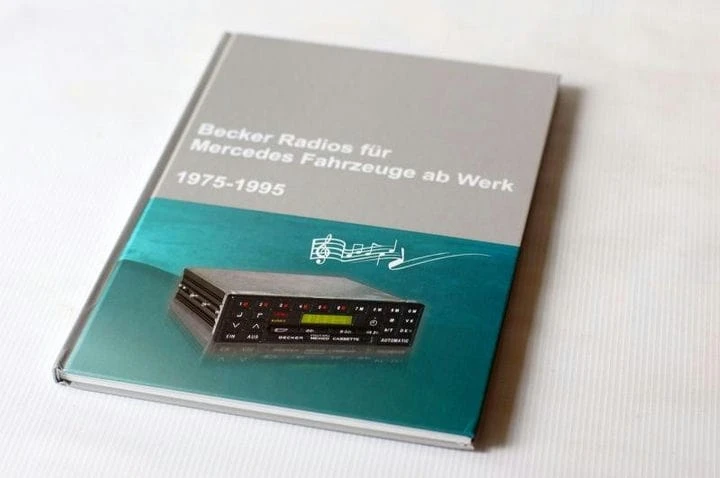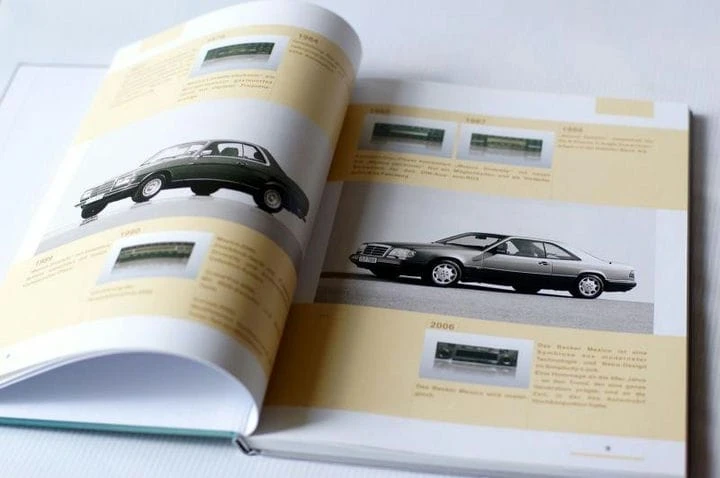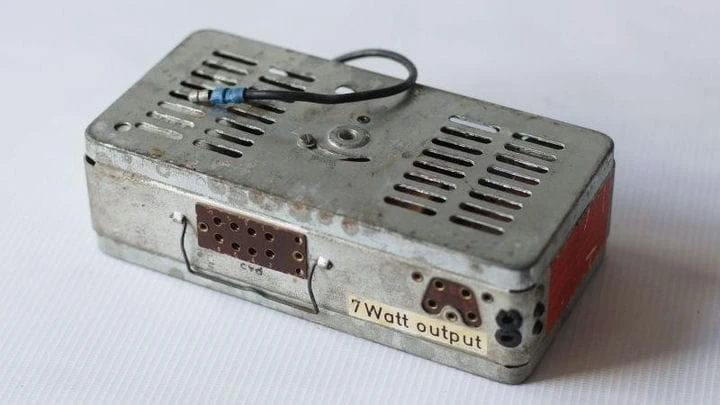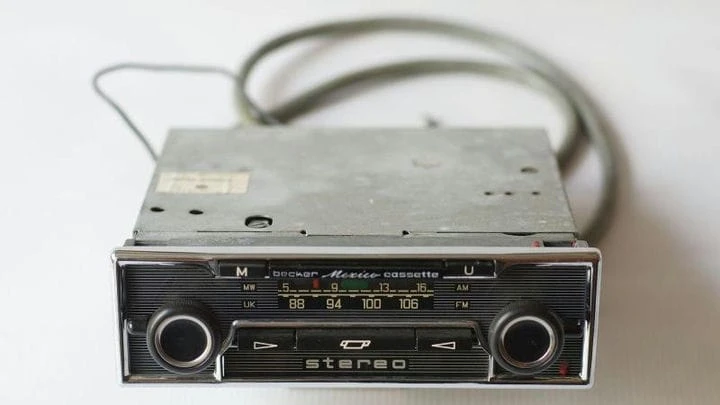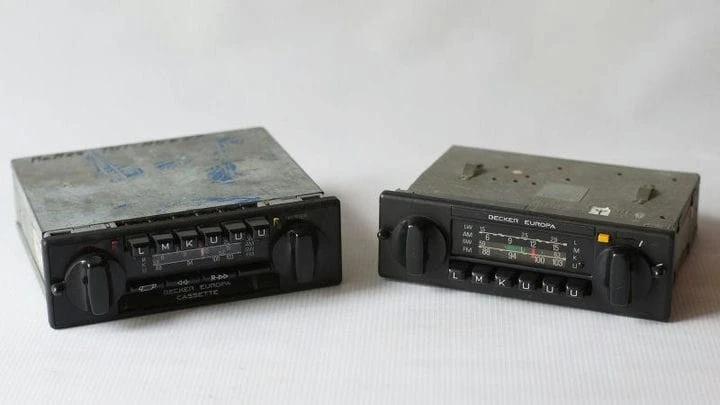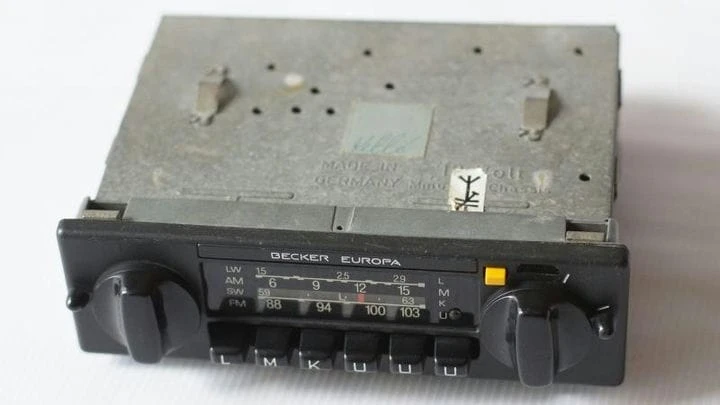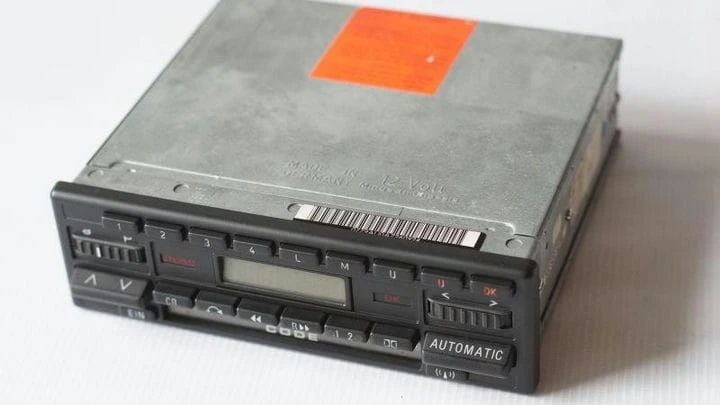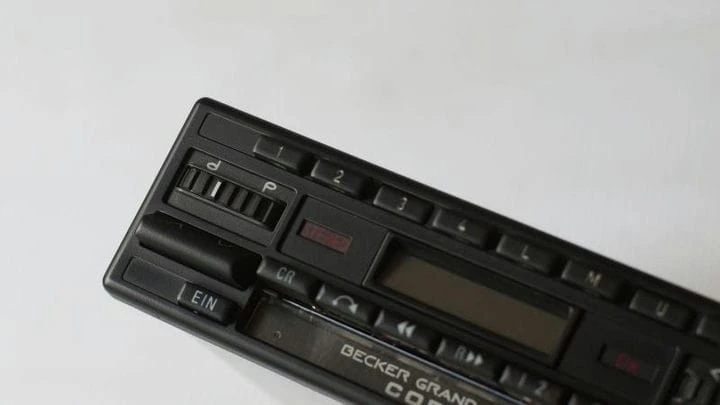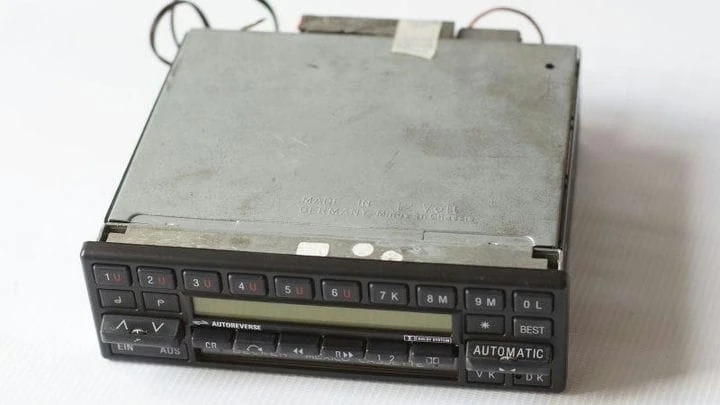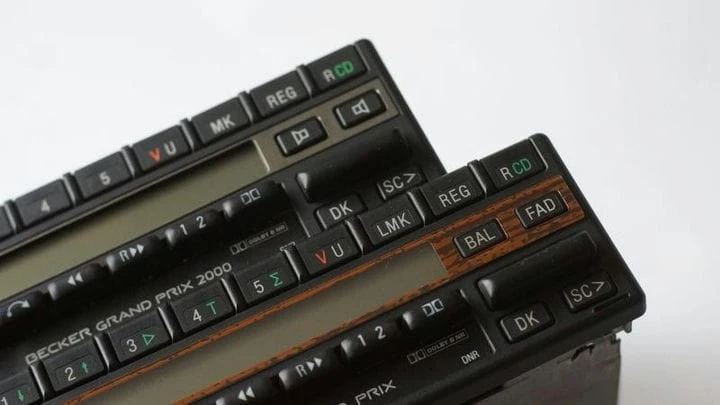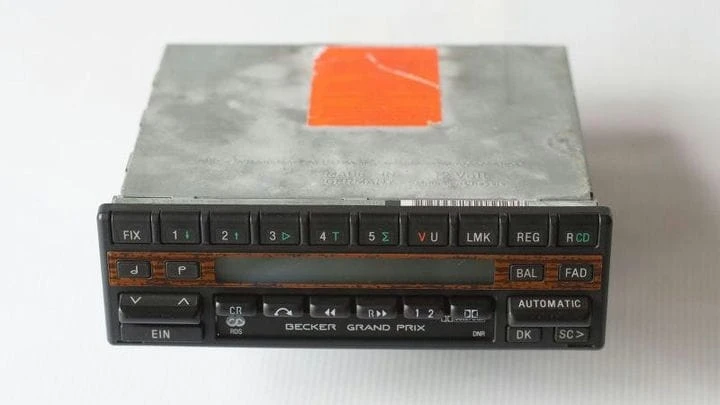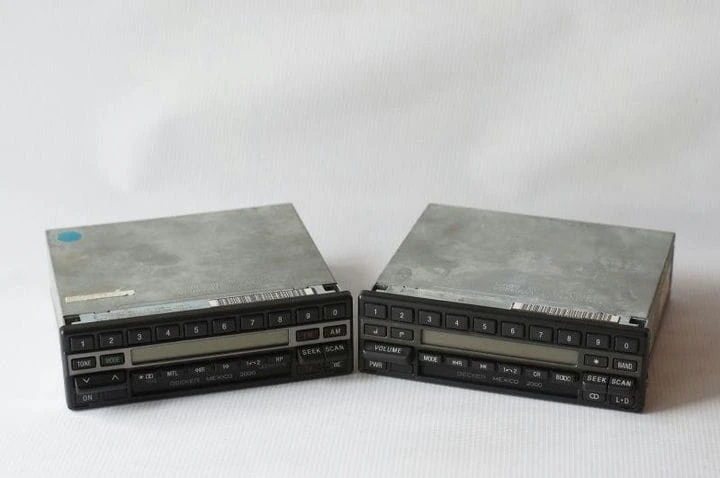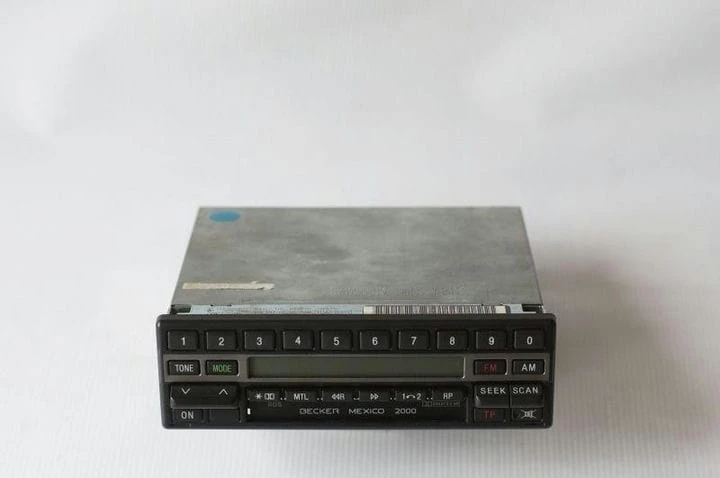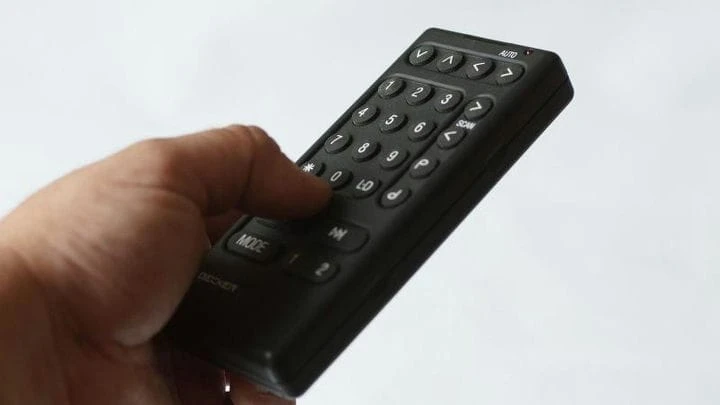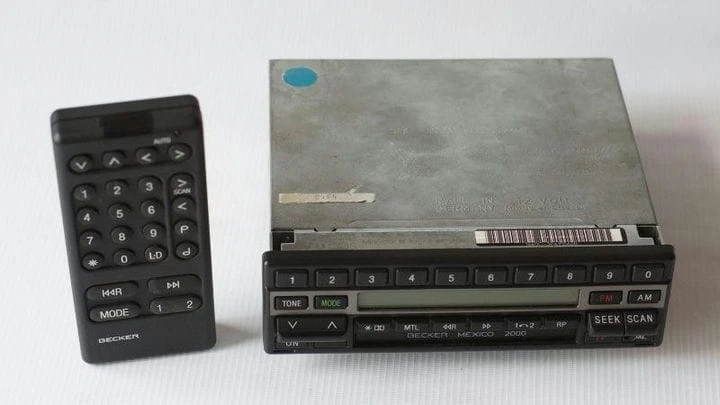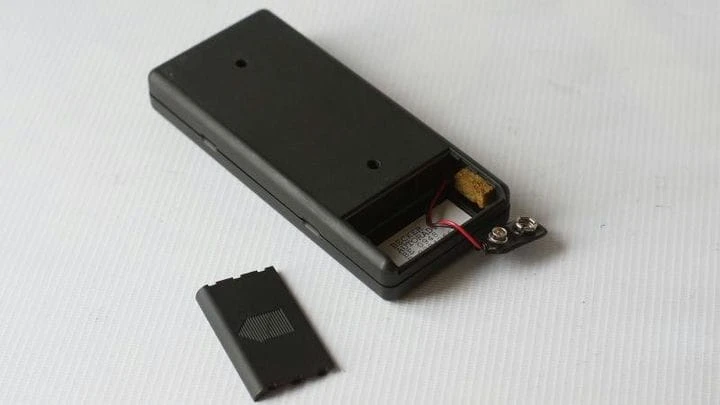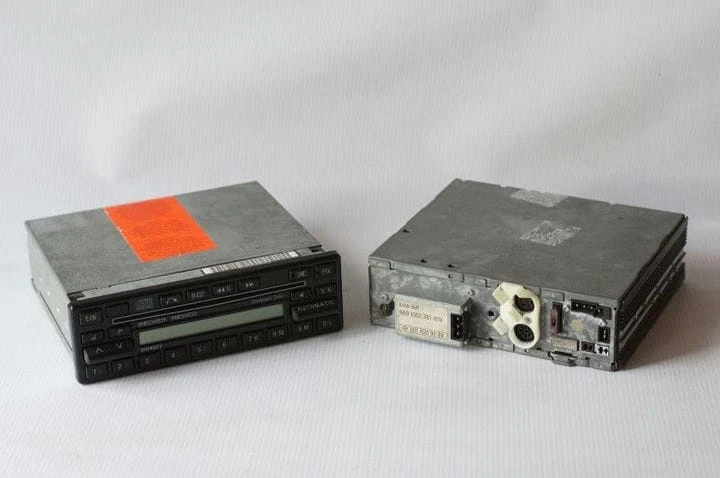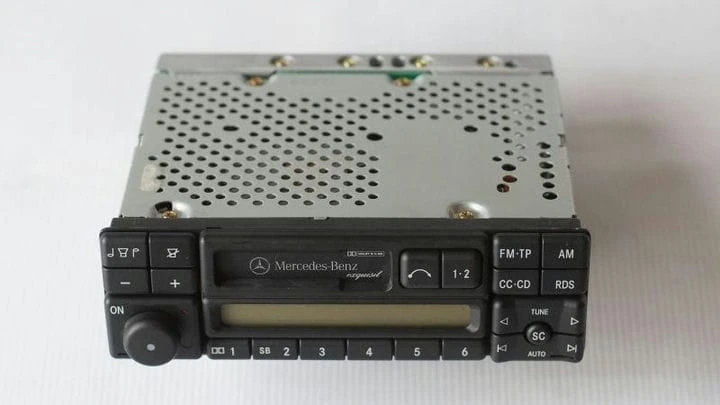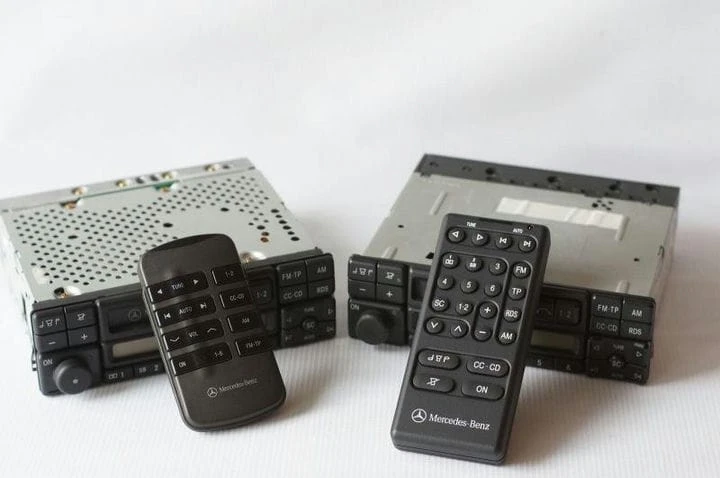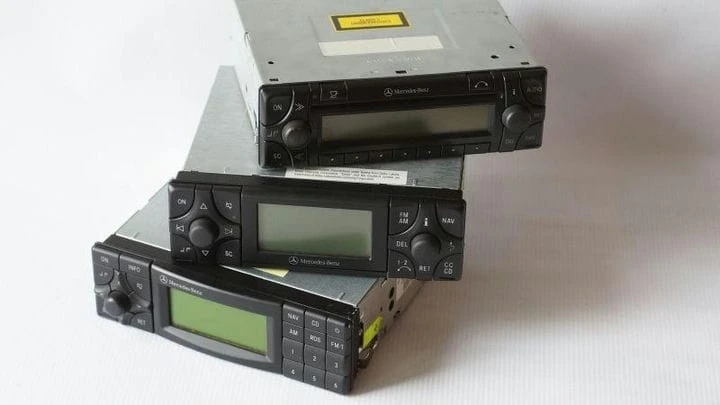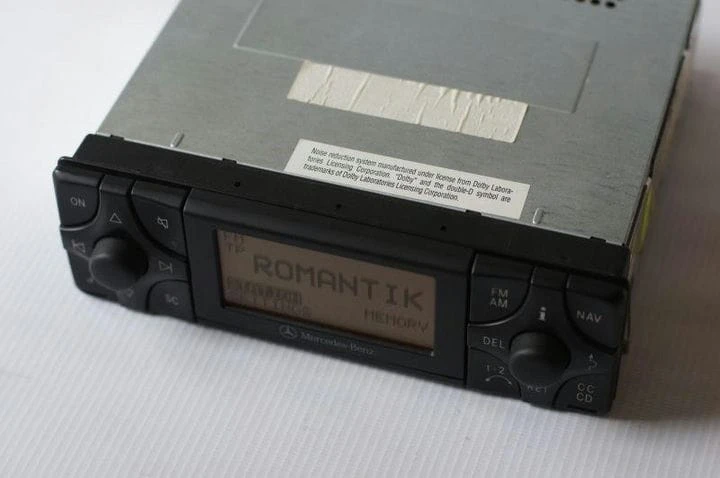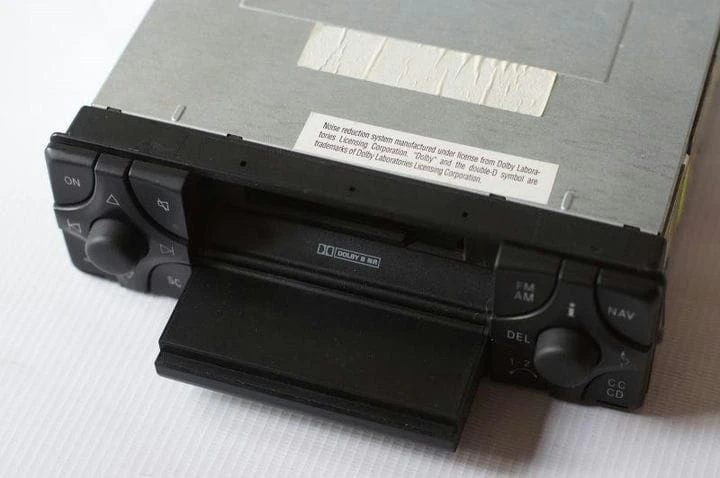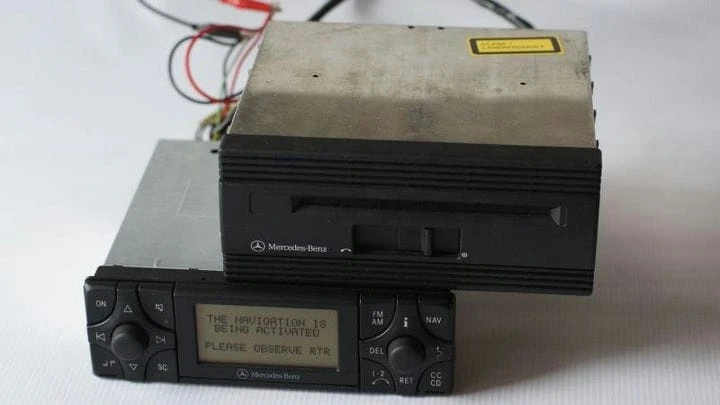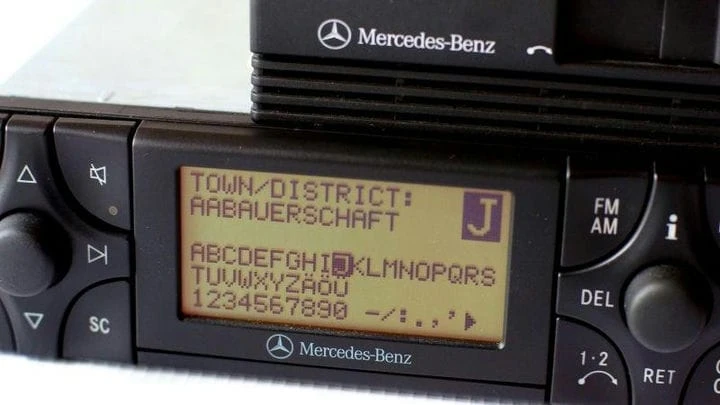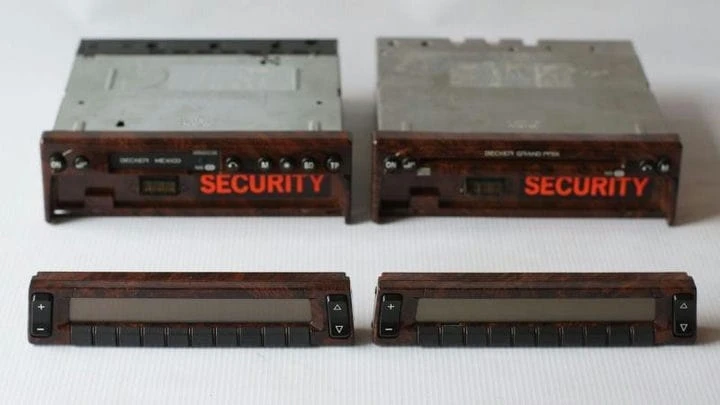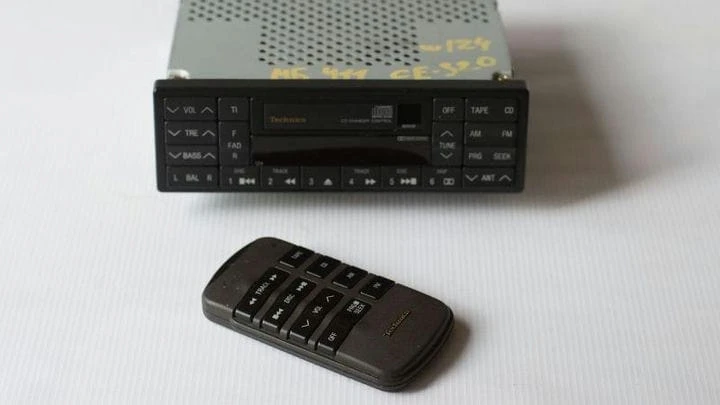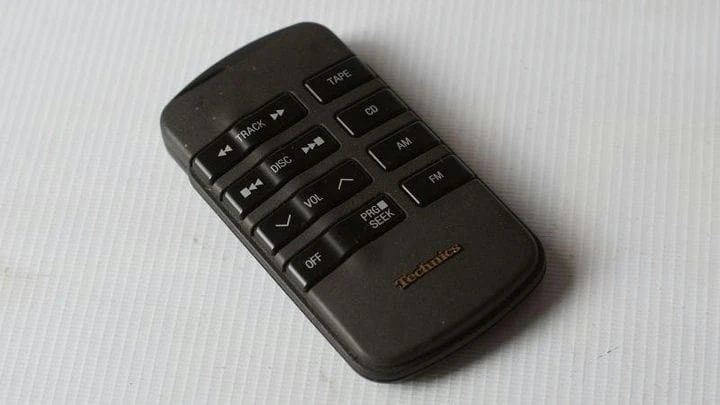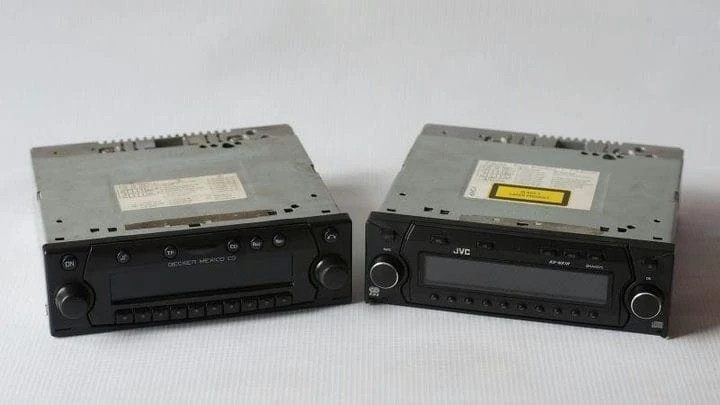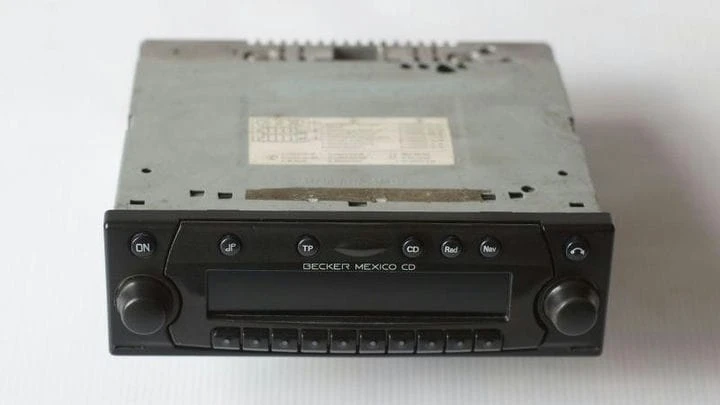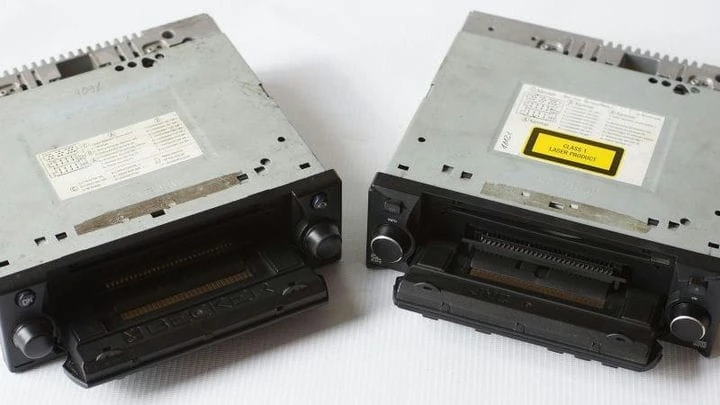Cassette with navigation, tracks and twists: how car radios have evolved
Auto search for radio stations in the radio receiver of the 50s of the twentieth century and GPS in the cassette recorder in the early 90s – how did car multimedia develop in the “pre-tablet era”? “Wheels” found the only recently professional collector of Mercedes-Benz car radios, who told us about the most interesting exhibits and their history!
The term “professional collector”, which I used in the sidebar to this article, may not be too correct: after all, collecting is a priori a hobby; the phenomenon is not professional, but purely amateur … Nevertheless, the hero of our story is a painfully specific collector. Probably the only one of its kind in our country, and even more so – the only one recognized for its own in a small European community of collectors of narrow areas of automotive audio technology. Therefore, the term “professional” sounds quite appropriate here, and we will leave it!
So, get acquainted: Dmitry, 32 years old, a resident of Moscow:
– In our family in the 90s, a slightly used 124th Mercedes appeared. In 2010, he came to me with a mileage of about 300,000 km. There was a cassette recorder in it, which had a typical sore – the resistor of the volume knob was worn out, filled with graphite powder, and the knob behaved inappropriately. Instead of a cassette player, I installed the top processor Pioneer DEH-88RS2 at that time, conditionally suitable for its symmetry in interior design. But, despite the fact that I tinkered with the settings for a long time (there are a lot of them), I did not manage to achieve the magnificent sound of my native “head”. As a result, the native apparatus was removed from the mezzanine, repaired, and away we go … I became interested in the evolution of Mercedes head units, and I plunged headlong into its study, acquiring copy after copy, studying them and restoring them. My collection covers the period from the post-war years to 2001, when the Command system appeared on the restyled 210 body. After that, the radio tape recorders ceased to be independent devices and were deeply integrated into the interior and electronics of the car. And, perhaps even more importantly, the old-school amazing sound was gone … Cars became more expensive and more complex, and the sound was lost.
Collecting Mercedes-Benz radio tape recorders is a niche hobby, completely undeveloped in our country. Yes, and abroad, it is also much rarer than even collecting the retro Mercedes themselves … Nevertheless, for several years of this hobby, Dmitry managed to gain a certain authority in the circles of European (mainly German) collectors, meticulously studying the smallest details in the differences between numerous varieties of radio tape recorders, holding micro-festivals and thematic exhibitions and publishing unique directory catalogs in their community.
The largest partner of Mercedes-Benz in the supply of components for audio systems has traditionally been the German company Becker, a partnership with which dates back to before the Second World War. Almost 90% of all head units on machines with a three-beam star are its production. Becker did not indulge in the names of the models … The main names of the radio models were Avus, Europe, Grang Prix and Mexico. They existed for decades, radically changing externally and internally, receiving different indexes and modifications, but retaining their names. Also, at different times, Mercedes-Benz collaborated with Blaupunkt, Bosch, Alpine, JVC and some other companies, but these collaborations cannot be called significant and / or long-term.
The oldest item in Dmitry's collection is Becker Mexico, a 1953 monophonic tube car radio. It was installed from the end of the 40s on Mercedes-Benz in the 110th body.
The receiver case looks like a standard “single-din”, like modern ones, but another large block is screwed to it from below, and an external module is connected with a cable with a multi-pin connector, in which there is a 7-watt tube amplifier. Waves – medium and VHF, from 87 to 106 MHz: at 106 megahertz in Europe, the range ended in those years.
Dmitry says:
– The device is fully functional – it was very difficult to find it in this form. I corresponded for a long time with German workshops that restore retro cars, and thus I was able to purchase it. The radio works amazingly automatically in the station. It's hard to believe, knowing that he is 68 years old! Under the tuning scale there is a long elongated key, on which Becker Mexico is written – this is the auto-search button. After pressing it once (and it “clicks” with amazingly tasty tactile feedback!) the motor starts to rotate the variable capacitor through the gearbox and stops when a radio station is detected. And it stops perfectly cleanly and clearly – strictly at a frequency. The next press – and the tuning goes to the next station, and so on. When the needle reaches the end of the scale,
The next exhibit on the timeline is the Becker Mexico Casette Stereo. This is 1975, and there were such in Mercedes-Benz in 115 bodies. This is already a classic radio tape recorder – a cassette player and a radio. There is a clear continuity in the design with the previous model: between the range buttons is the same long auto-tuning key bearing the inscription Becker Mexico Casette.
The external amplifier is again in the form of a separate remote unit, but here it is no longer a tube one, but a transistor one: powerful output transistors are visible from the outside on the radiator wall. There were both mono and stereo versions. The remote amplifier was used because of the rather large element base of the radio equipment of that time. Putting it into the body of the radio itself (in which the cunning auto-tuning mechanics occupied a lot of space) in the 70s did not work yet …
In the second half of the 70s, the pretentious style “a la home radios” in car audio gradually began to disappear. Plastic prevailed both in the handles and in the panels, and, what is important, then it was not economy, but, on the contrary, chic!
Characteristic representatives of the genre – Becker Europa in the version of the radio and cassette. Late 70s – early 80s, 116th body and early 123rd. The volume and radio knobs today look ridiculous, reminiscent of a stove or a washing machine… Nevertheless, the receivers had memory on the station!
Buttons LMKUUU – memory cells in the corresponding ranges. Accordingly, it was possible to memorize one station each in the longwave, mediumwave and shortwave ranges, and three stations in the fashionable VHF. After tuning to the station with the handle, it was necessary to pull the memory button towards you until it clicks, and then press it all the way, pushing it back, and the station was saved. The button and indicator “kurier” – the inclusion of a special mode for receiving traffic announcements: broadcasting with a subtone, a kind of harbinger of the current RDS.
Cassette deck – without auto-reverse, although it was already beginning to appear then. It's amazing how amazing the quality of the belts was – they have not dried out so far, although they have never changed! The cassette sounds as expected, the sound does not “float”! In the same devices, by the way, LEDs appear for the first time – so far only for indicating radio modes. The scale was still illuminated from behind by an incandescent bulb …
The first radio with an LCD display appeared on Mercedes-Benz in 1981, on cars in the 126th body. This is the next generation of the Becker Mexico Casette. Digital radio, station memory, electronic (button) volume control. There were versions with amplifiers 2×5 watts and 2×7 watts, there were radios, and there were bare radios, in which an external cassette deck was located in the armrest.
The model was produced for a short time – two years. It is generally accepted that the designers went too far with the “flush” buttons, which, because of this, had insufficient “groping” blindly.
Becker Grand Prix Code is an amazing model with a number of interesting innovations for its time. It was put in the late 123s and in the 126s too. The first model with an anti-theft password code. Experiments in the field of ergonomics continued …
The key signature feature of this radio is, of course, “caterpillars”. On the right and left are two regulators, which must not be twisted or moved, but set in motion through a rubber “caterpillar”, with movements reminiscent of turning pages! An unusual, but very convenient type of regulator, especially for blind steering, without taking your eyes off the road.
Station memory buttons are also very interesting here! They are made with a reference to the old-school mechanical buttons, behind which were hidden not simple contacts for shorting, but mechanism thrusts. Immediately, the buttons for fixing the station in memory are pressed and clicked like “mechanics”, although this is a false solution – in fact they are ordinary electronic clocks.
The years 1985-1987 brought an enlargement of the LCD display – with the Becker Mexico Casette, this Mercedes-Benz radio screen design, long and narrow, was established for many years.
The radio also has code protection. There is still a mechanical control of the cassette deck, but there is already an auto-reverse, there is a button for the Dolby noise suppressor, a button for chrome film “CR”.
The rarest experimental Becker Mexico Casette model of the late 80s – with microscopic knobs integrated into large rocking buttons! These tiny wheels controlled the balance between the right and left channels and the front/rear volume ratio. Frankly, there is nothing particularly outstanding (and even very useful) in such a solution, but technically it was very complicated – from these wheels implanted in the keys, through the entire body of the radio, tiny cardan (!) Shafts went to the back wall … It is also the first Mercedes-Benz radio model, where there was a connection with a speed sensor and automatic volume control depending on the speed of movement.
1991-1993 years. Becker Grand Prix and Becker Grand Prix 2000. The radios are still cassette, but for the first time they have control of an external CD changer!
1990-1993 and very cool modifications of the cassette Becker Mexico 2000. They were installed on the 140th body of high configurations – the 600th, 500th. Two devices – almost identical, but with slight differences for different markets. One radio has a plastic frame, the other looks the same, but metal. Automatic retraction of the cassette – just pressed it, and it was sucked into the mechanism. Cassette control is electronic.
But the most delicious thing in these Mexico 2000s is for the first time double tuners in remote block-modules with continuous scanning of the radio range, as well as remote controls!
As soon as you turn on the radio, it starts radio reception with one tuner immediately, without any delay, and with the second tuner it combs through the entire range in parallel from beginning to end. And he does it all the time. This made it possible to switch between stations as quickly as possible sequentially (using arrow buttons, not memory buttons), since with such switching the stations were taken not from the on-air search, but from the internal memory of the second tuner, which also constantly updated it. Plus, it often happens that radio stations have different frequencies in different broadcasting regions – in this case, the Mercedes-Benz dual tuners automatically, imperceptibly and silently change the frequency when you leave the broadcast zone on one frequency on a long trip and enter the zone with another …
The dual tuner block also contained an amplifier and was the size of the radio itself:
The infrared remote control at that time is a special chic! A huge thick brick (at the same time very convenient) on a 9 volt “krone” battery!
In 1989, a new audio medium came to cars – a compact disc. Becker Mexico Divercity became the first radio (although the word “radio” with the loss of the cassette drive already loses its meaning, but we will continue to use it as familiar and understandable) with a CD drive on Mercedes.
The disk mechanism was “hickeyed”, the radio station control keys moved down, and the disk keys were placed on top. The overall design as a whole has not changed – the same long and narrow “pencil” display with a proprietary yellow backlight. The tuner and amplifier block is again remote:
Two more very interesting devices from the point of view of history and collecting are variants of the Becker Exquisit model. They were put on the restyling of the 124th, the restyling of the 140th and the dorestyle of the 210th body.
From this model of radio tape recorders, they stopped writing the brand of the manufacturer (Becker) – only the model. Despite the production years from 1993 to 1997 and the presence of disc radios in the Mercedes-Benz range, these Exquisits are cassette. But with the ability to control the changer, of course. Mercedes-Benz didn't bury tape for quite some time… An infrared remote was also available.
Although the name of the model translates as “exquisite”, the muzzles of the radio tape recorders look rough, the design is closer to commercial vehicles than to premium cars … Nevertheless, they were extremely expensive. The cassette deck slot is already narrower here, for inserting the cassette longitudinally, and not transversely. Cassette deck with a suction mechanism and electronic control, although the buttons of the deck are very large and look like mechanical ones.
What else is interesting about Exquisit? First of all, the fact that it was an attempt of cooperation between Mercedes-Benz and Japanese electronics manufacturers. The Exquisit model was developed, of course, by Becker, but the Matsushita and Nakamichi firms that united for this task were suddenly allowed to make a copy. And they made their own version, oddly enough, not for the Mercedes of the Japanese market, but for Europe … This was an order for the armored Gelandewagen, the armored 140th and some piece versions. Externally, the radios are almost the same, but the Becker version has a plastic front panel and buttons, and the Matsushita and Nakamichi versions are completely metal, although visually this is barely visible. This was the requirement for fire safety due to the installation of fire extinguishing systems in the armored vehicles. Type, “option that does not support combustion.”
The Japanese and German versions were distinguished by sound and remotes. The Becker version sounded amazing, but the Matsushita/Nakamichi version sounded so-so… The German model console is the same as before, a healthy angular brick, but the Japanese tried and made a much more elegant and modern version:
The year 1997 is coming … In our country, the 412th IZH with the Bylina radio is still rolling off the assembly line, and Mercedes-Benz has the first radio with GPS navigation!
Here are the first three devices where navigation was implemented. From the bottom up in the picture:
1 – Blaupunkt radio receiver, 1997, last 140th body;
2 – Bosch cassette recorder, in which the cassette slot was hidden behind a folding display; 1999, 140 and 210 body;
3 – disk radio Becker Audio 30, 210 body
A cassette slot was hidden behind the folding display… The display hinge is motorized. Often, by the way, I broke down from attempts to close it forcibly manually …
How did navigation work in the era of simple character displays without graphics in its modern sense? Yes, and on such simple devices as radios and cassette players?!
Actually, all navigation functions were carried out by an external navigation unit. It had the same dimensions as the radio itself – even larger. Inside the block there was a CD-drive, where a disk with guiding software was spinning. When you press the “NAV” key on the radio, the unit starts up, spins the disk and prompts you to enter the address. Input was carried out in the simplest alphanumeric interface by moving the cursor through the alphabet.
After entering the address, route guidance began. It was “arrow-voice”: a female voice, familiar to any modern navigation, gave commands, and from the visualization there were only arrows on the screen – straight or turning, with a distance to the maneuver. The map with the road, buildings and other objects, as it is now, of course, was not displayed. But this was a real breakthrough – a real revolution in driver information systems!
Two beautiful and expensive models with a walnut finish are the disc Becker Grand Prix and the cassette Becker Mexico. Structurally interesting devices with removable panels in convenient cases, with compact remotes. They were produced in the late 90s and went as dealer options. Interestingly, Becker produced them not only for Mercedes-Benz, but also for other brands. For this purpose, it was possible to change the backlight color in the menu: yellow for Mercedes-Benz, green for Ford, red for Audi and Porsche.
Fun fact: LED technologies at that time were still imperfect, and on these devices the RGB backlighting of the displays turned out to be short-lived … The diodes deteriorated over time (quickly enough): either red or green in the matrix stopped shining normally, and the display turned out to be a color mess – some diodes shone only green, others only red, and still others remained operational and reacted to adjustment, giving, for example, yellow color … Today it is extremely difficult to find such a radio tape recorder with a live display, but both copies in Dmitry's collection are fully operational!
In 1992, Technics (brand Matsushita, now Panasonic) suddenly joined the list of Mercedes-Benz audio partners. This brand was allowed to make a radio for cars produced for the Japanese market (124, 129, 126 bodies). The result is a unique and very rare device today with an unusual “smooth” front panel, a discharge (rather than liquid crystal) display uncharacteristic for Mercedes-Benz radio tape recorders and fantastic sound quality! It was produced from 1992 to 1996.
Another interesting story of cooperation between Mercedes-Benz and the Japanese of the period 1995-1996, namely, with JVC. The Japanese company was allowed to make a clone of the next generation of Becker Mexico, and as a result, a device called the JVC KD-NX-1R appeared.
Both devices were disk-based, with folding front panels and, importantly, already with navigation built into the main body of the radio – without any additional remote units. Discs with maps were sold – and either a music CD or a navigation CD was inserted into the radio slot. It was possible to listen to music from the disk while the navigation was running, but only from an external changer, which the radio could control. However, the radio worked in parallel with the navigation prompts – the sound of the station was muffled when the navigation gave the driver its command.
The Japanese made their version slightly different in the form of buttons and knobs, but, in essence, it was the same. Both this Becker and its clone from JVC were not put on the Mercedes-Benz conveyor, but were mounted as dealer options for the 124th restyling, 140th restyling and 210th.
Despite the scale, our article captured, at best, a third of Dmitry's collection – a lot has nuances that are important only to a specialist and not very expressive for those who do not dig so deeply and who need to get acquainted superficially with an unusual hobby to broaden their horizons. Much is still in the process of restoration – for example, very curious models with built-in phones and hefty 1FF SIM cards. But the main thing is that, even despite the restrictions on the time period pre-established in the conditions of collecting, there is no end and no end to collecting … Mercedes-Benz had too wide a range of types and subspecies of the same models for different markets and conditions to in a lifetime, with the help of one person, it would be possible to collect everything in one place!

